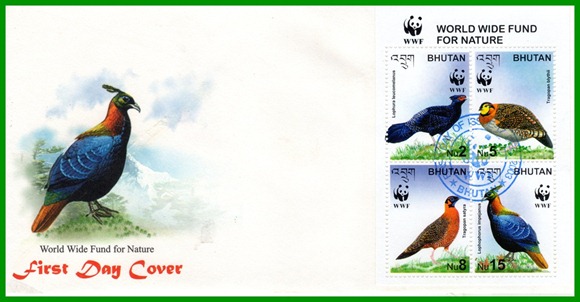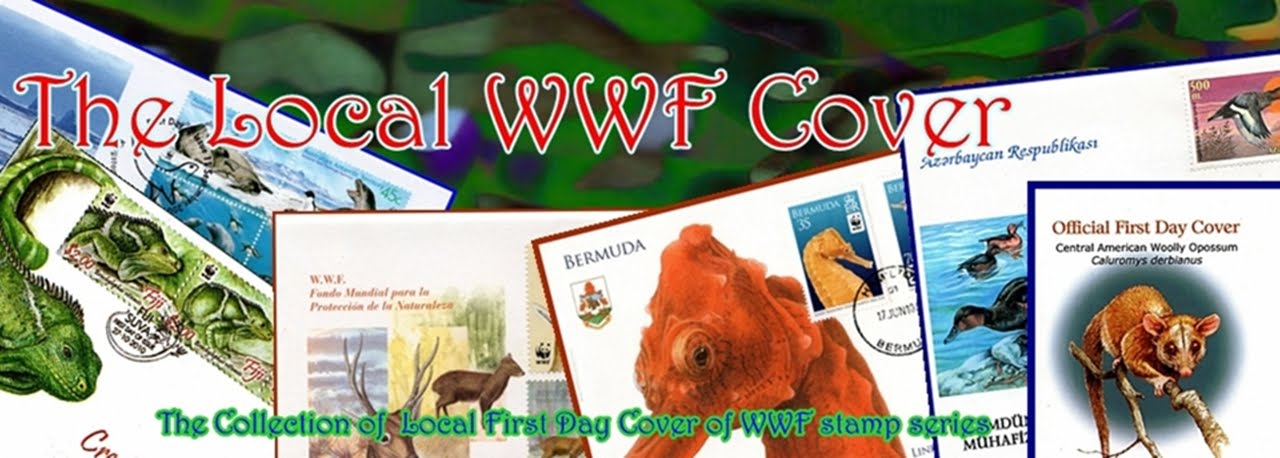
The Postal Administration of Bhutan has issued one miniature sheet consist of four stamps WWF series feature the pheasant bird species, Lophura leucomelanos, Tragopan blythii , Tragopan satyra and Lophophorus impejanus on December 17, 2003.

Lophura leucomelanos or the Kalij Pheasant, , is a pheasant found in forests and thickets, especially in the Himalayan foothills, from northern India to western Thailand.
Males are rather variable depending on the subspecies involved, but all have an at least partially glossy bluish-black plumage, while females are overall brownish. Both sexes have a bare red face and greyish legs (the latter separating it from the red-legged Silver Pheasant).

Tragopan blythii or Blyth’s Tragopan or the Grey-bellied Tragopan is a vulnerable species of pheasants and located in many different areas, including Bhutan through north-east India, north Myanmar to south-east Tibet, and also China.
The total population is estimated to be about 2,500 to 9,999 birds.This estimate is a very small number compared to some of its relative birds and is believed to be decreasing at a rapid rate.
Tragopan blythii normally flocks to wooded areas as it prefers the undergrowth of evergreen oak and rhododendron forests, and other dark, quiet places. This bird has a higher elevation than most birds. Blyth’s Tragopan pheasant is the largest of the genus Tragopan.
Like most pheasants, the male is brightly colored. Females are not as brightly colored as the male tragopan, for they do not need the extravagant appearance to attract a male counterpart.
Blyth’s Tragopan are generalists. In the wild, they consume seeds, berries, fruits, and buds. Captive birds usually consume insects, worms, and even small frogs. While they are primarily vegetarians, most birds have a predilection for berries and fruit.










